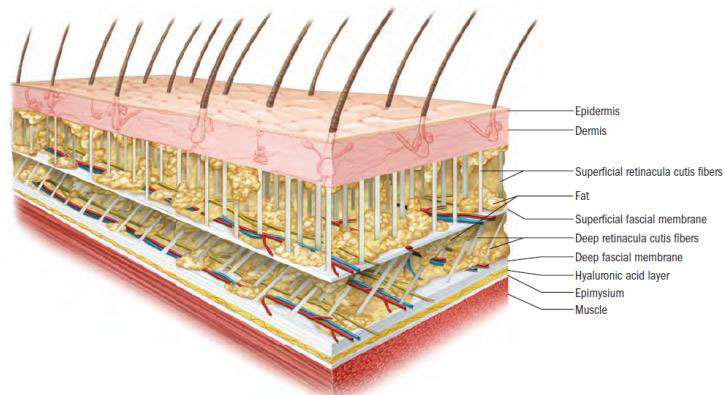NAFC NewsBlast - April 2017 | Ed 1
What is Fascia? The Intricate Web We Weave
By Tammy LeBoss | thefitprofoodie.com

Fascia - The body's interconnecting web
Do you wonder why fascia has become such a hot topic? Apart from foam-rolling fascia to release tension from our tight hips, upper back and IT bands—fascia is fascinating because it runs deep.
What is fascia? Fascia can be described as the interconnected webbing that surrounds all of our joints. Understanding fascia and its role in movement, posture and functional training can be very useful in training, but also in everyday life. Fascia has been called the 'gateway of information' affecting us all on a physical as well as emotional level.
The following are a few ways we can remember the basic functions of fascia:
- Important in joint stability
- Surrounds all joints
- An interconnected webbing of small nerves
- Contracting muscles isometrically engages fascial tensioning
Fascia is called a gateway of information
Fascial tensioning can be felt from the foot (or floor) through the entire leg, into the deep core muscles. Correct application of fascial tensioning is a way of building stability in the joints during movement. Trainers should teach their clients how to stabilize before mobilizing, applying fascial tensioning techniques. Here are 3 examples you can apply now for improved stabilization:
- Engage powerful legs in Warrior 1 & 2 (such as in the practice of yoga); cue students to isometrically squeeze midline while engaging their inner thighs;
- Stagger your stance in Split Squats; be sure to square the hips, squeezing the front hip back and the back hip forward;
- Stand on a single leg digging toes into the ground; think of picking up a small ball or a towel using the grip of your toes.
Also, to better understand the role of fascia during movement, understand the body’s kinetic chain and its role on subconscious movements:
“Any movement, in any joint, has an effect on every other joint, up and down the body.
This is known as the kinetic chain. Micro-trauma, or strains in the muscles, joints, ligaments and fascia in one area of the body can lead to pain and postural issues in another area of the body along the kinetic chain. When someone moves their head left or right, for example, a slight, almost imperceptible movement from the foot up through the kinetic chain allows this to occur. The action of turning the head creates small movements in the ankle without causing pain. It is actually possible to assist in rehabilitating an ankle injury this way.” (NAFC True Bar™)
Fascia is called a gateway of information by podiatrists and human movement specialists because it affects us all on physical, emotional and subconscious levels. In the health and fitness industry, fascia is as fascinating as it is misunderstood; it is truly an intricate web that we have woven within the human body.
Get stronger and more stable fast! When it comes to human movement, injury prevention and performance, it is crucial to understand how our joints’ proprioceptive awareness lies within our fascia. Trainers and health and fitness pros can gain a training edge by learning how to apply effective isometric training and fascial tensioning. Ask about NAFC’s True Bar™ course, apply dynamic joint stability and get your clients quicker results. Or, visit www.nafctrainer.com and experience ‘live’ a truly unique hands-on event, NAFC PURE Anatomy™ course. Want to improve client retention? Go deeper. Your clients will appreciate you more for it.

